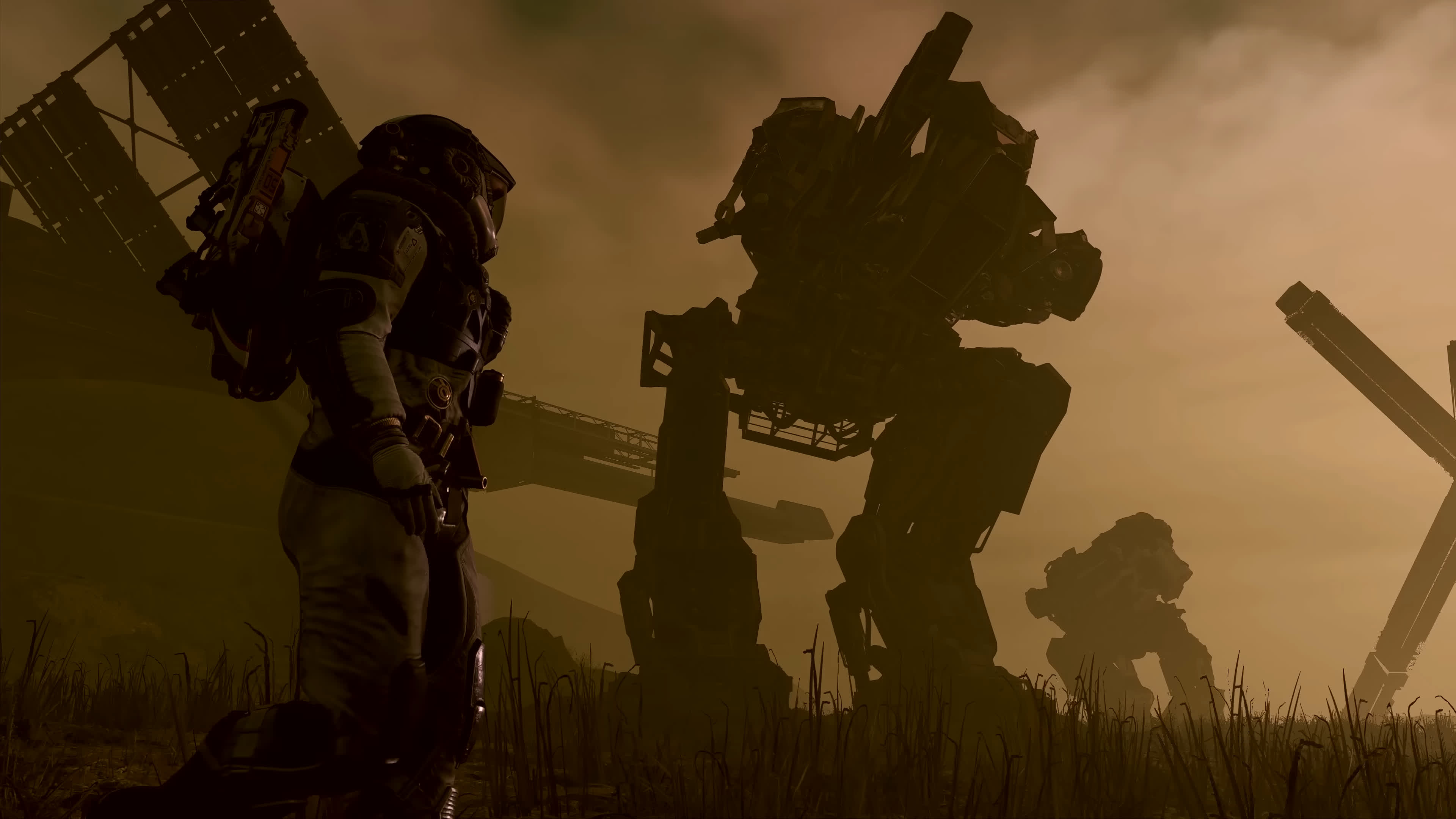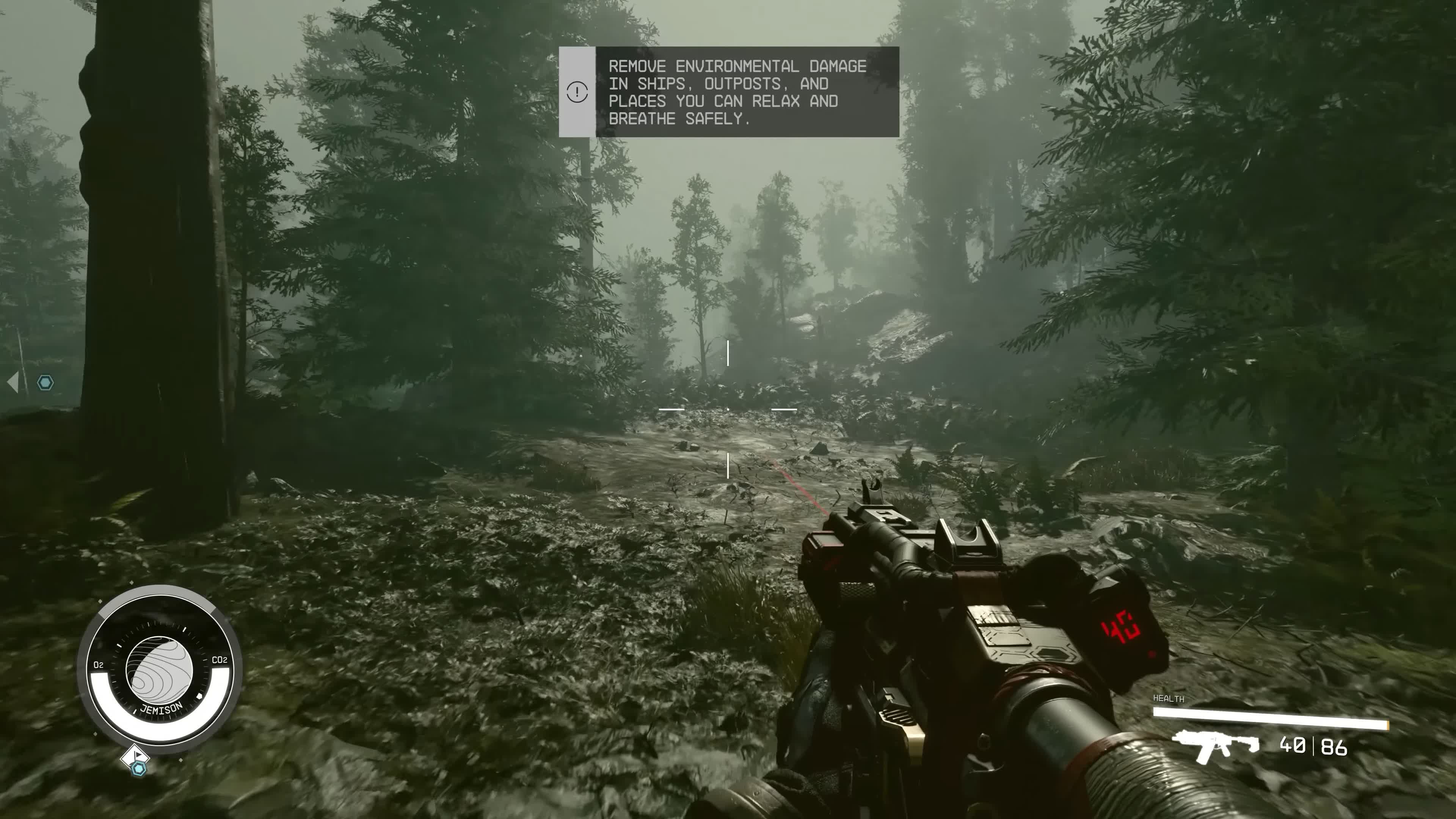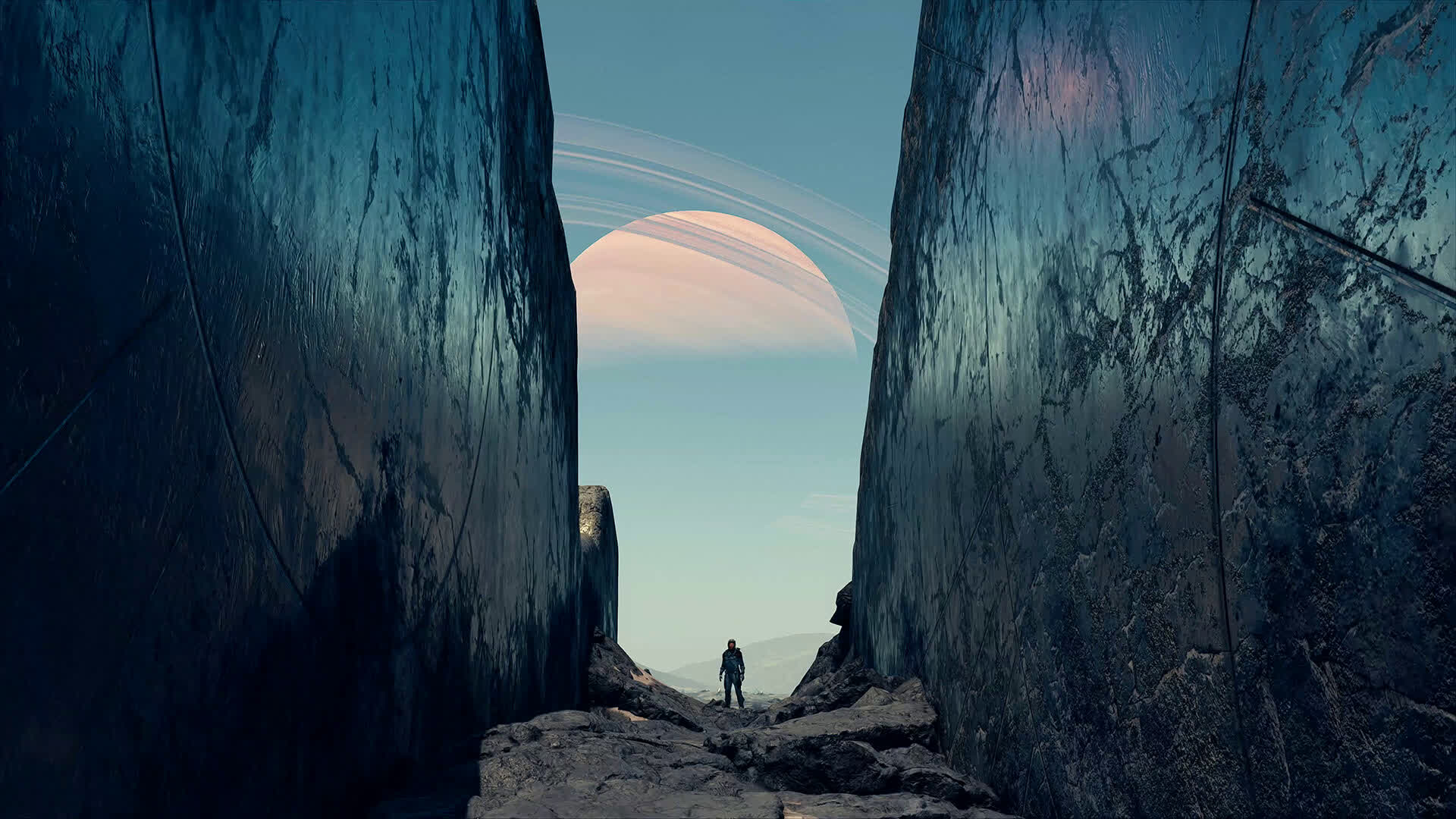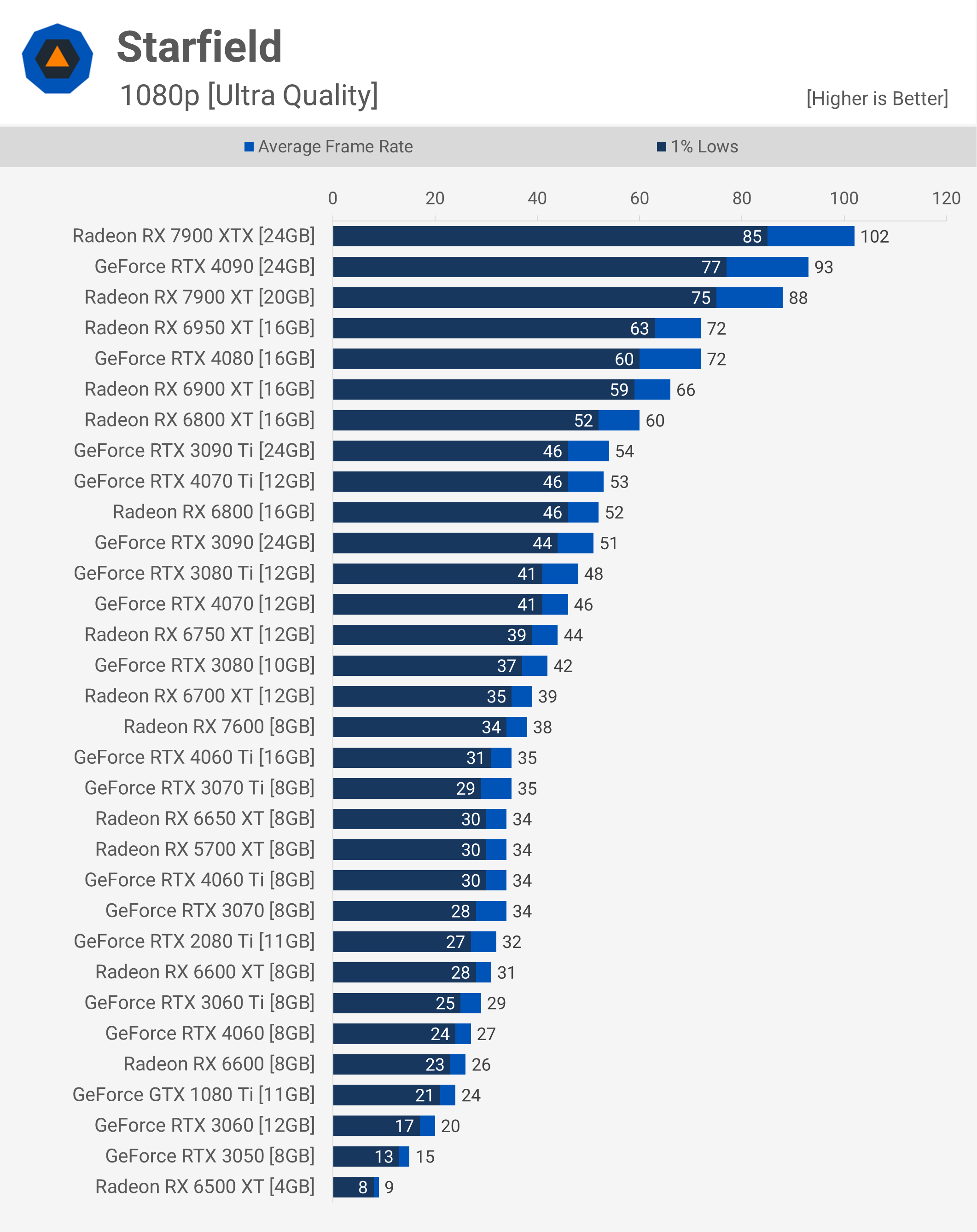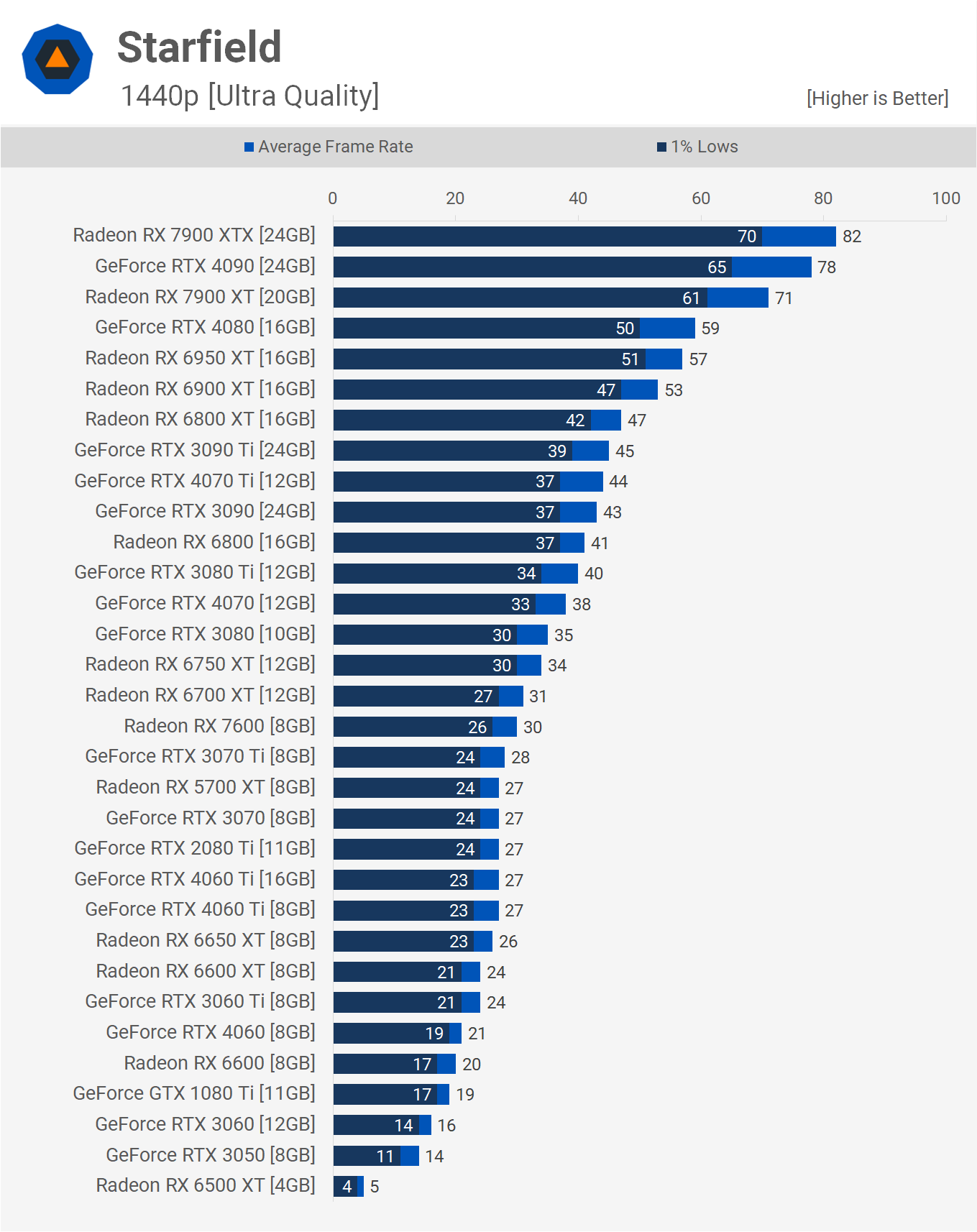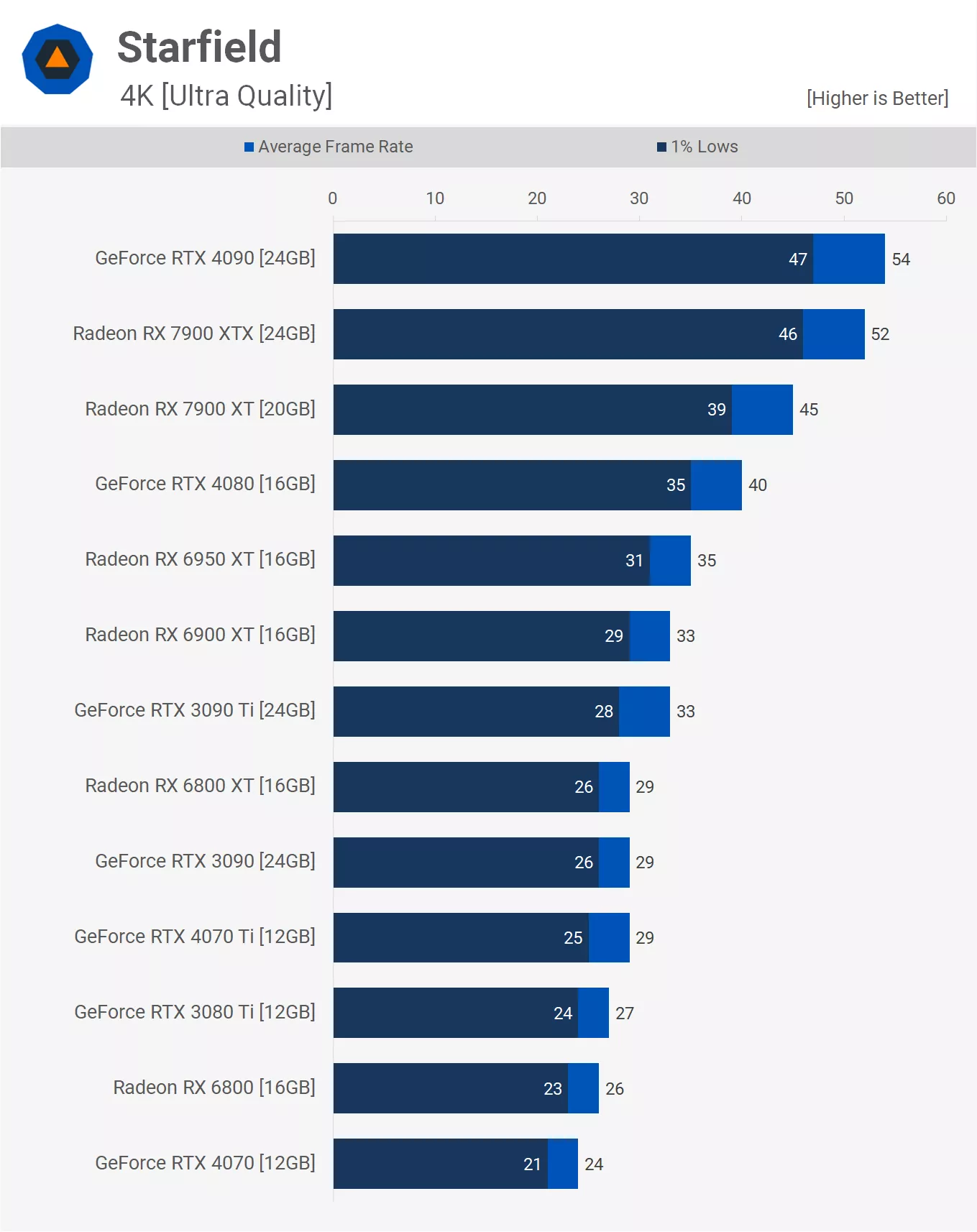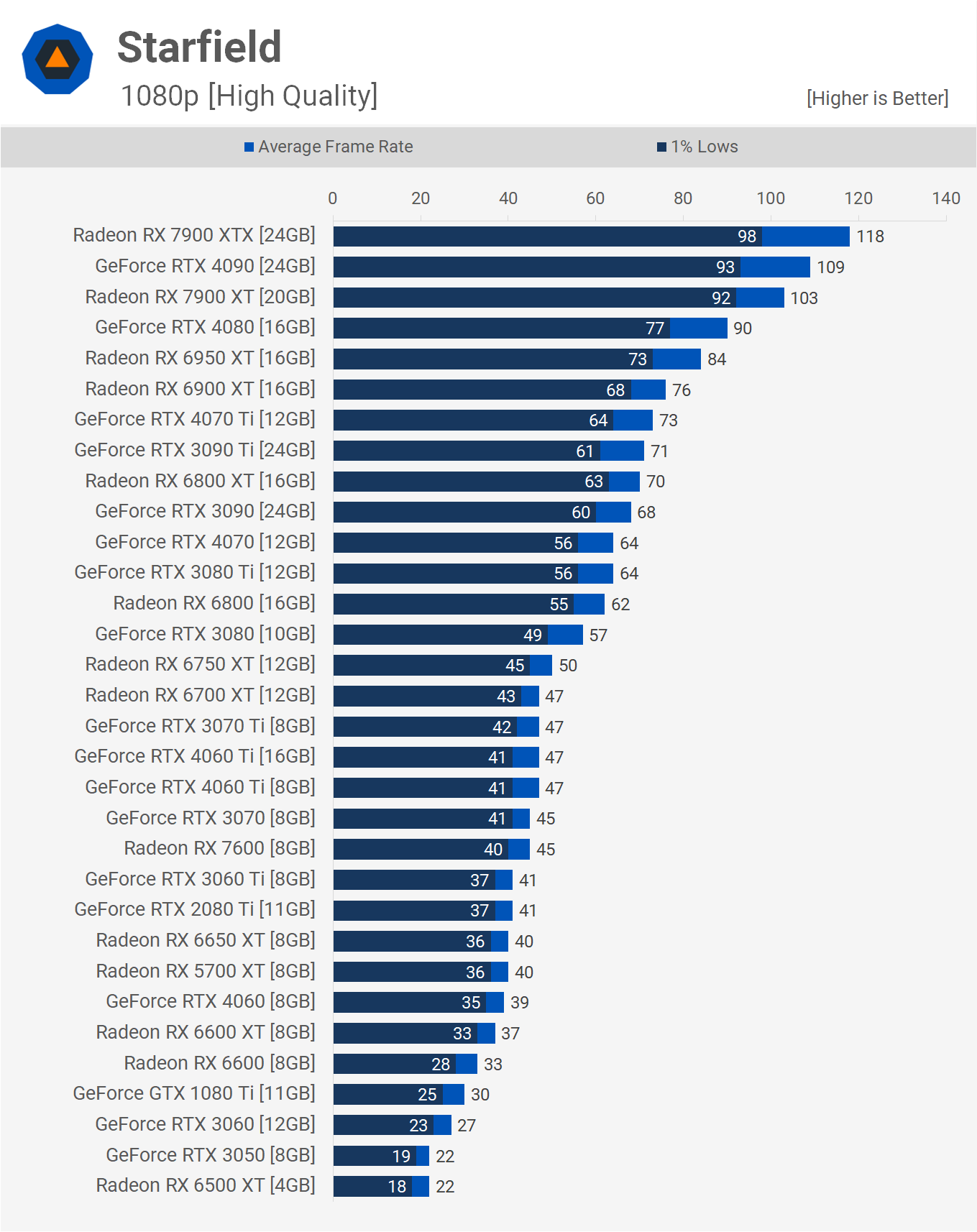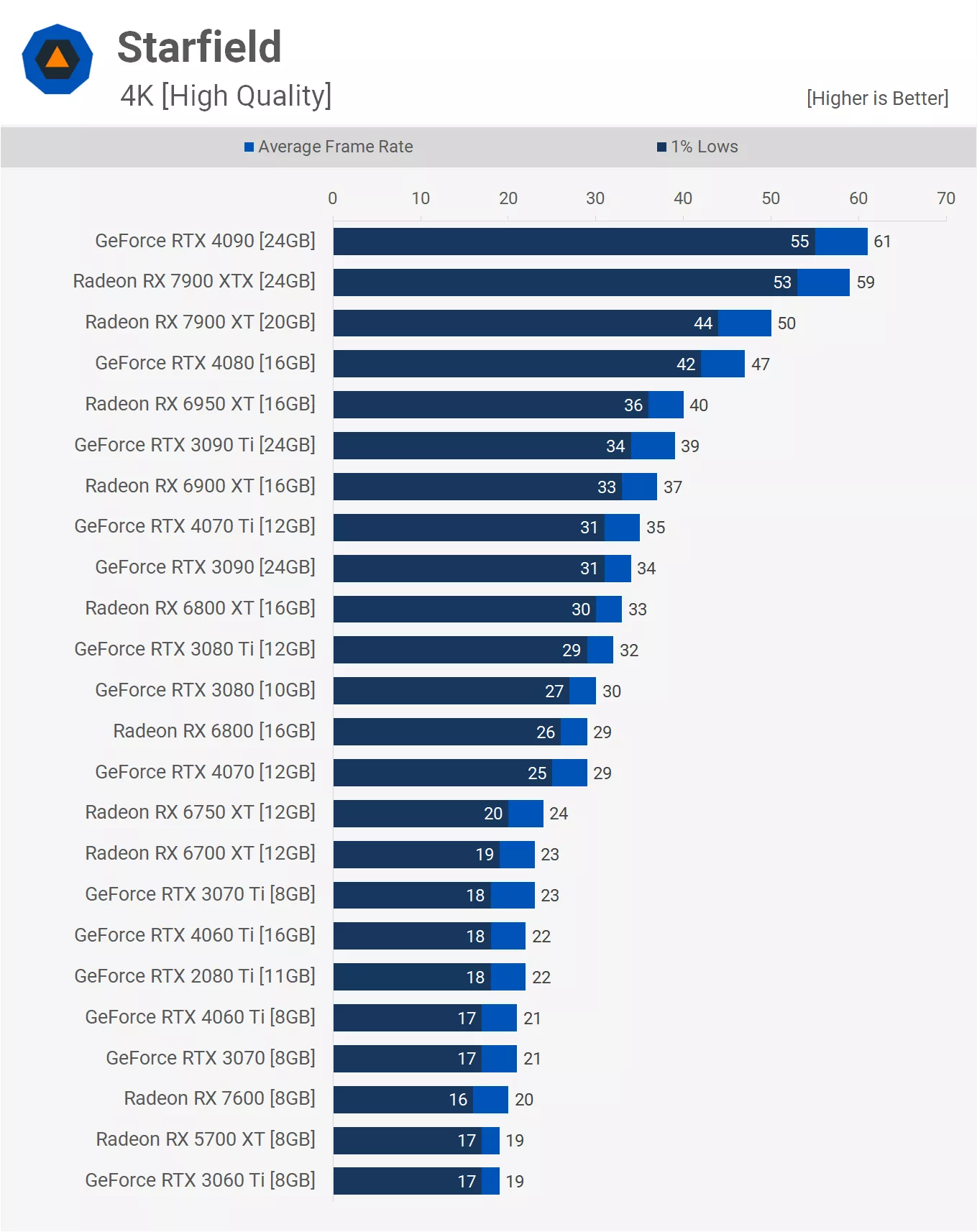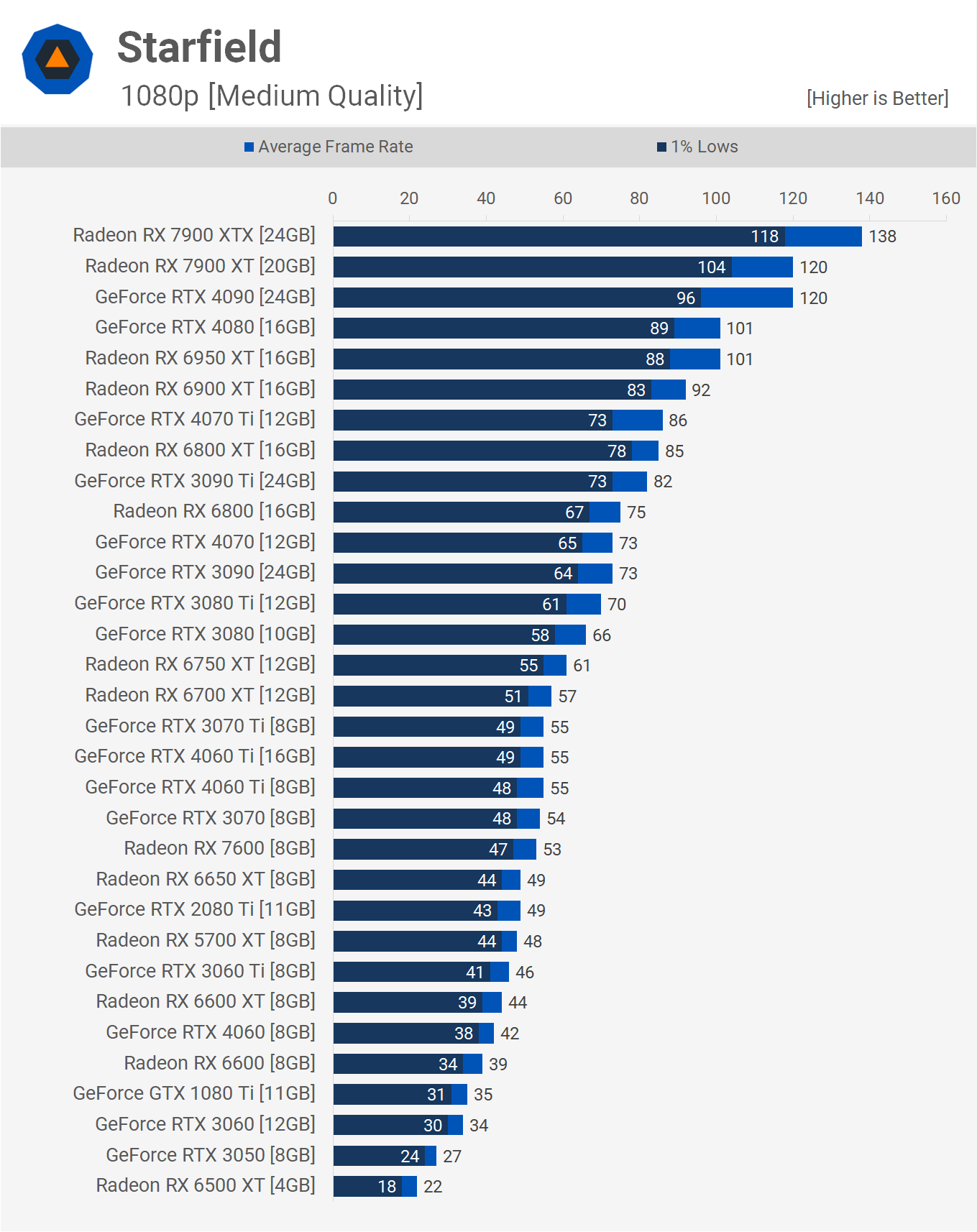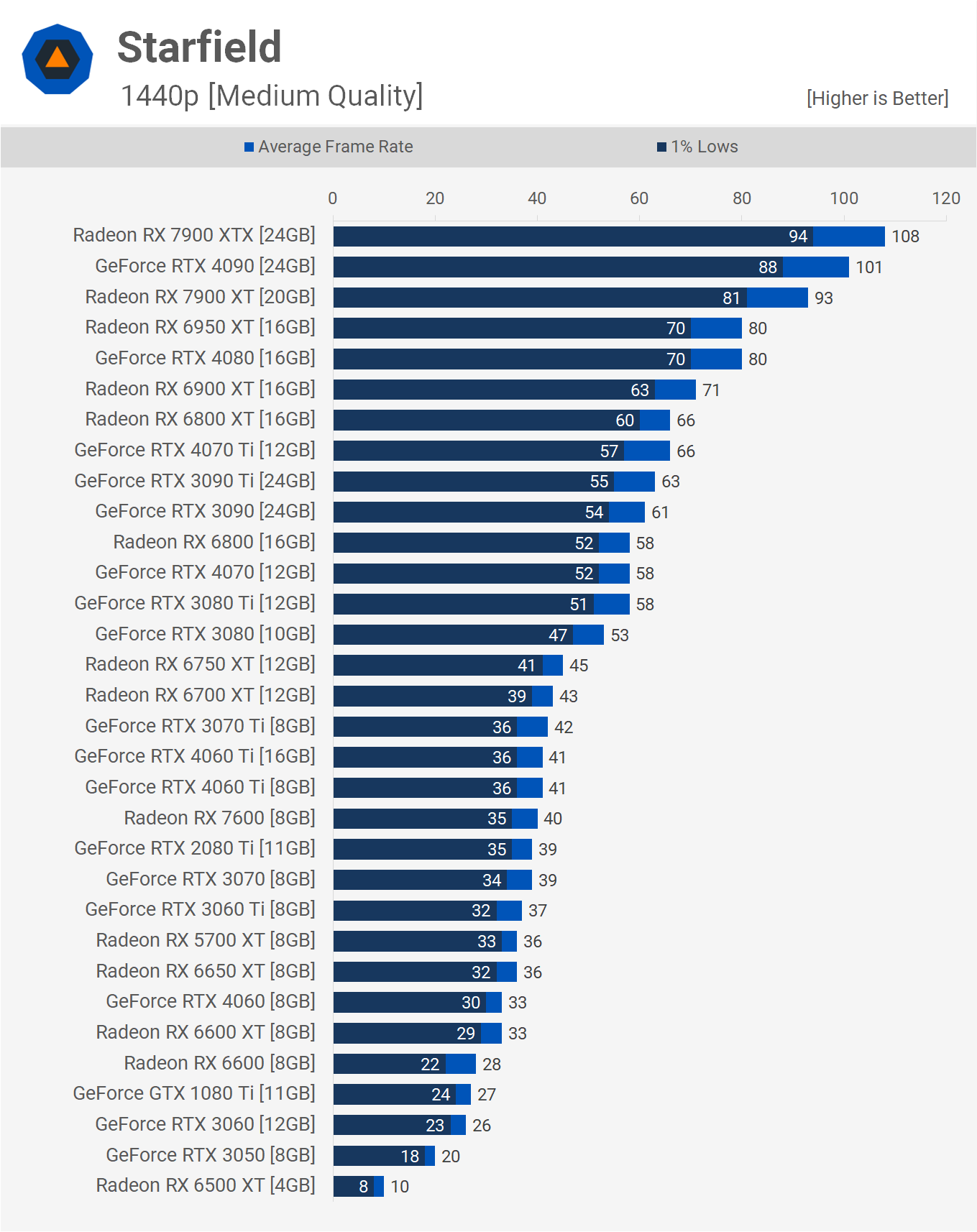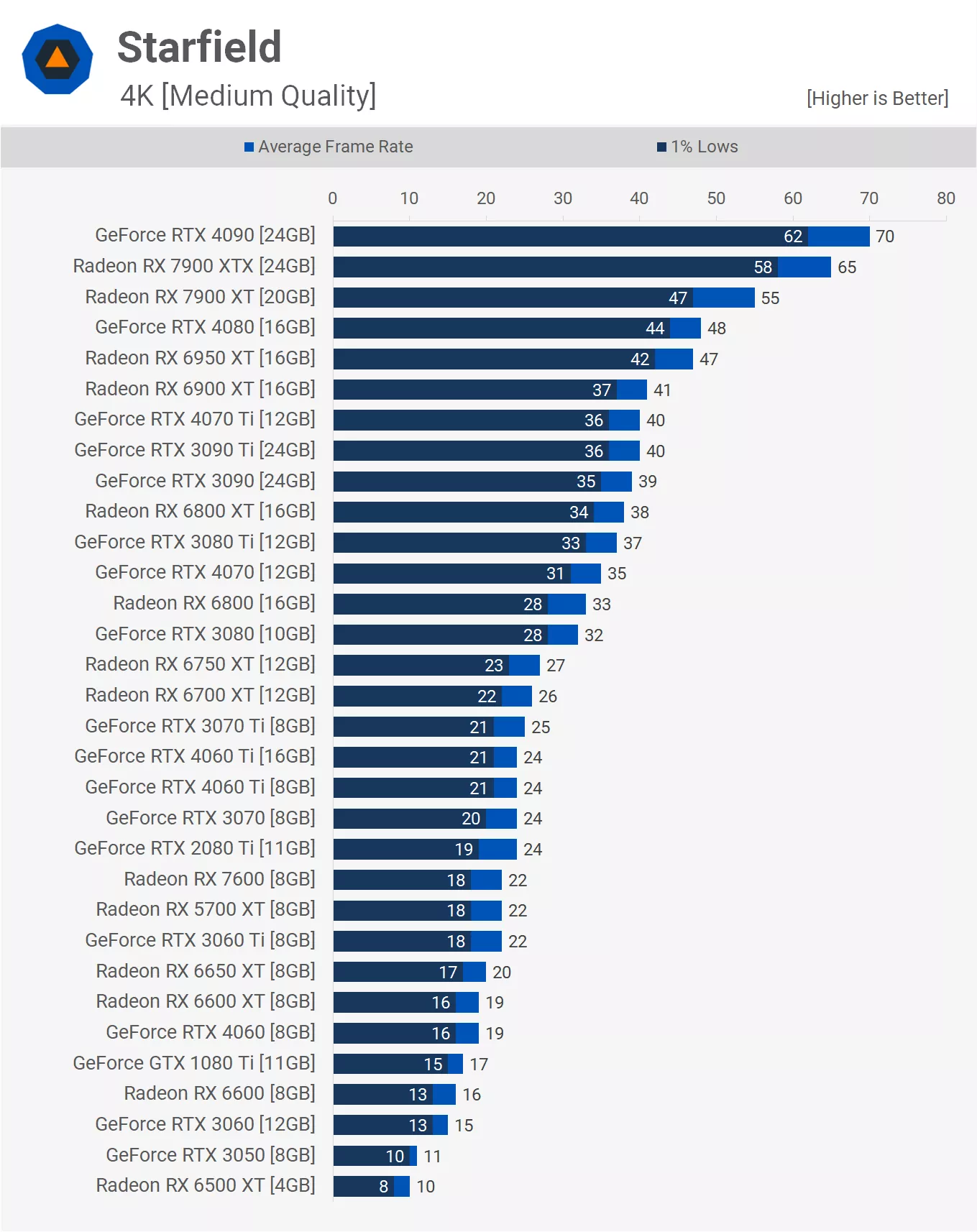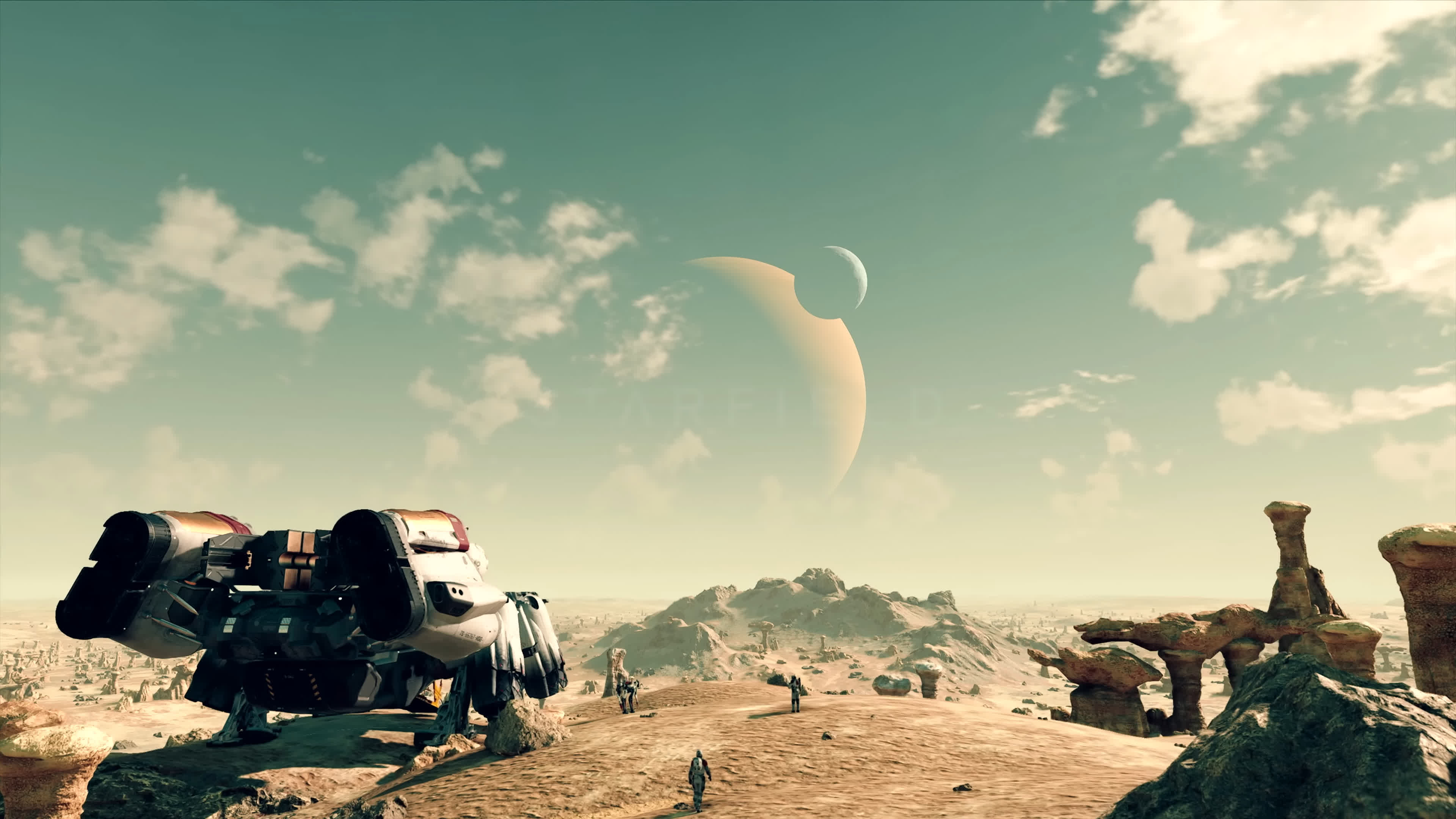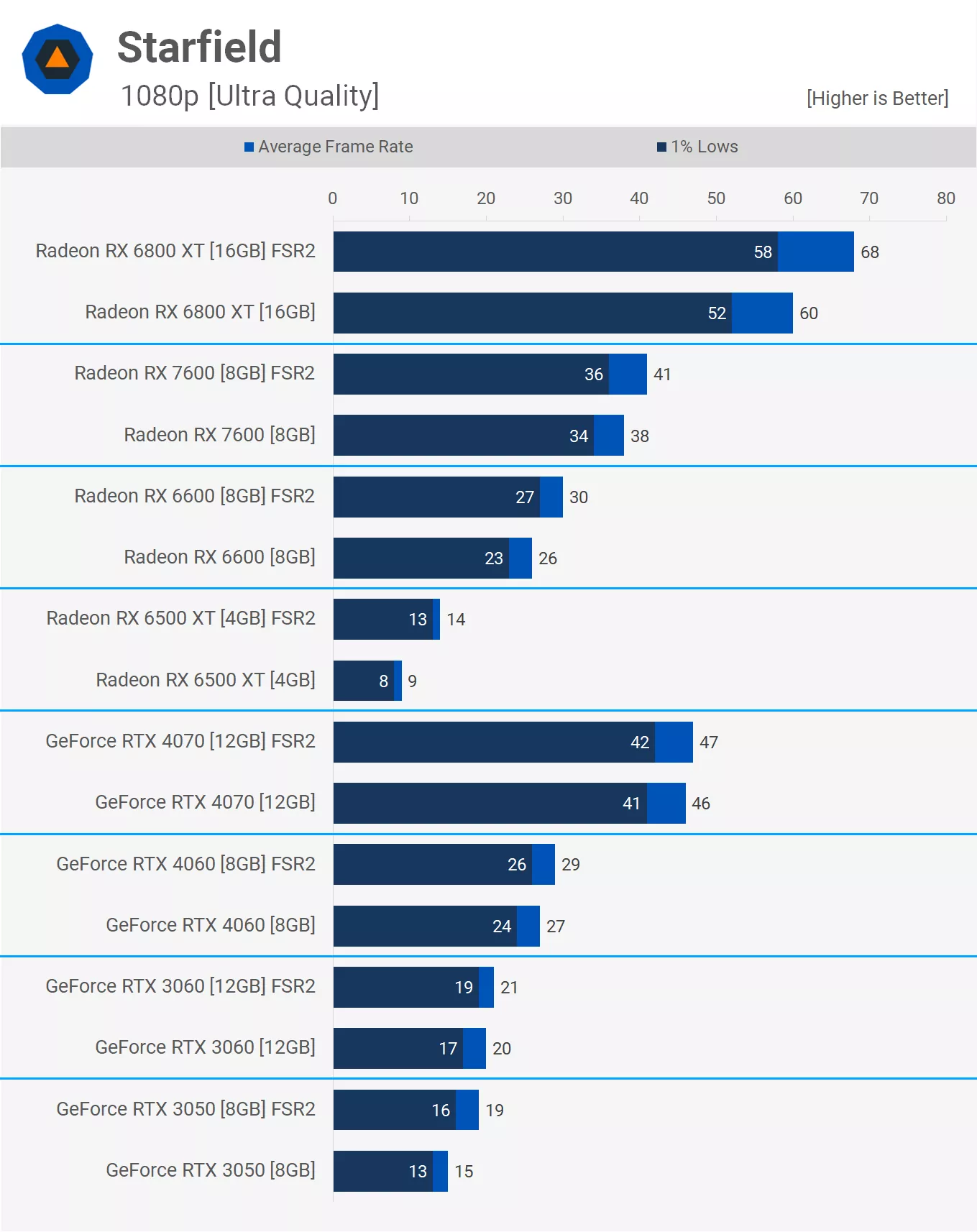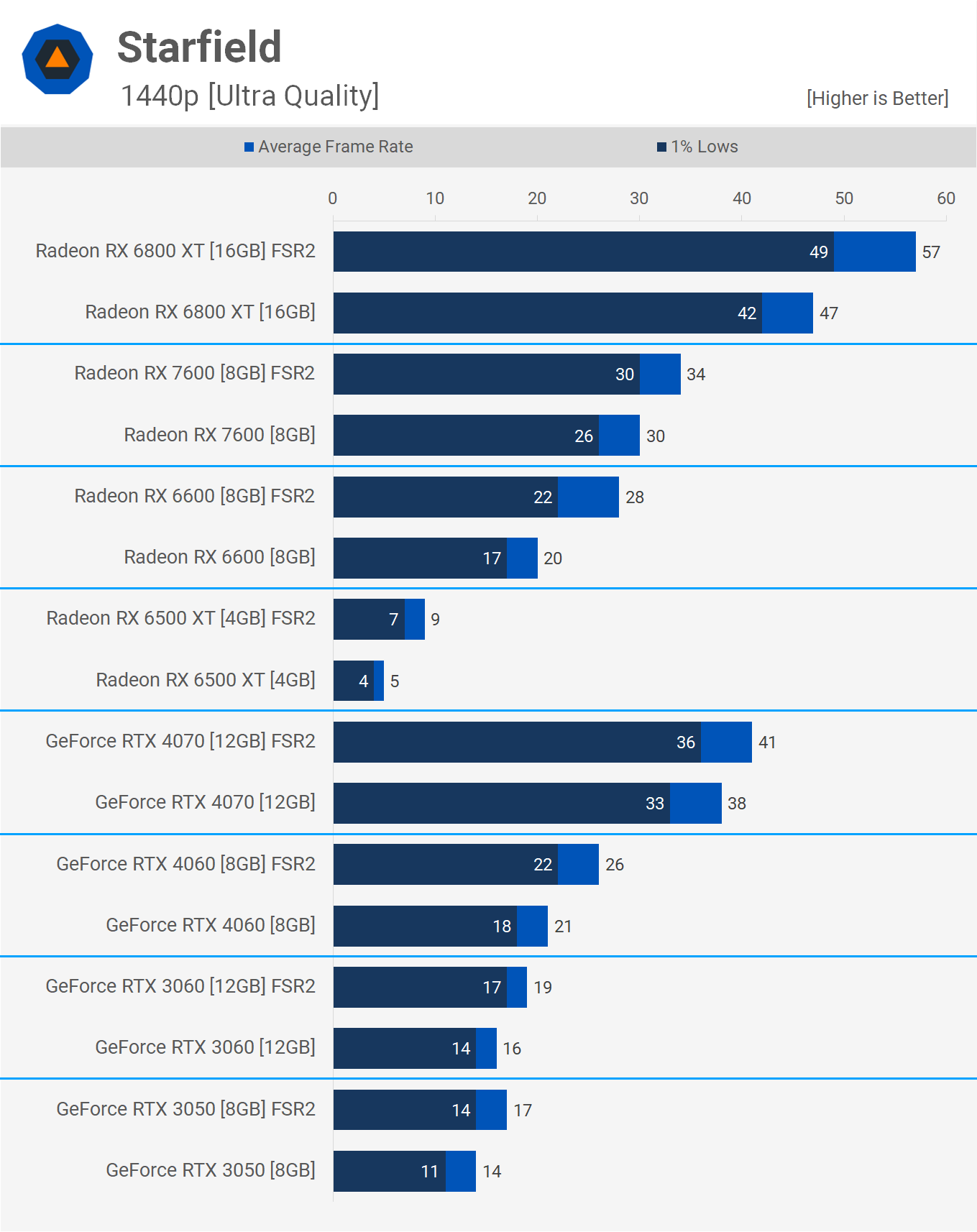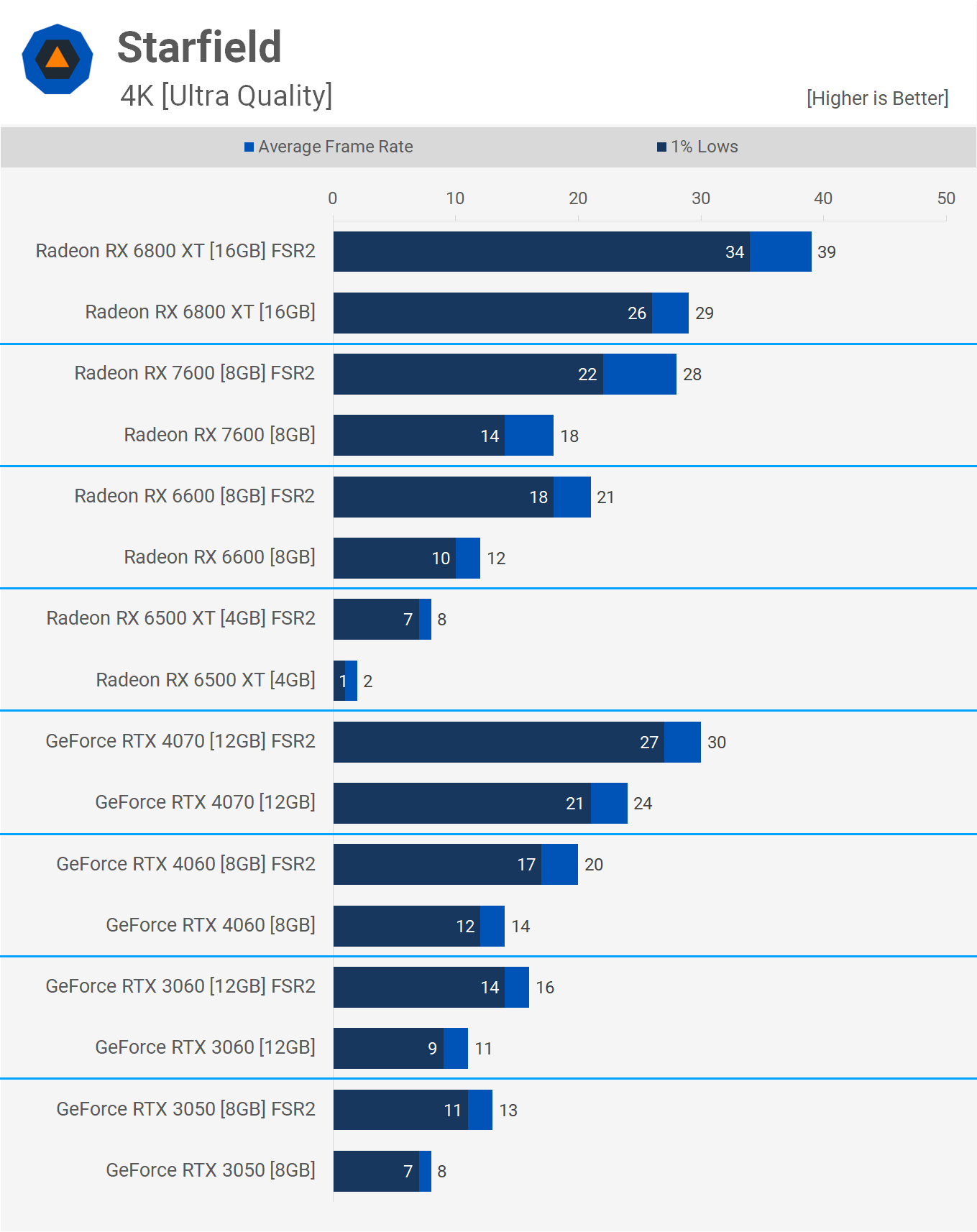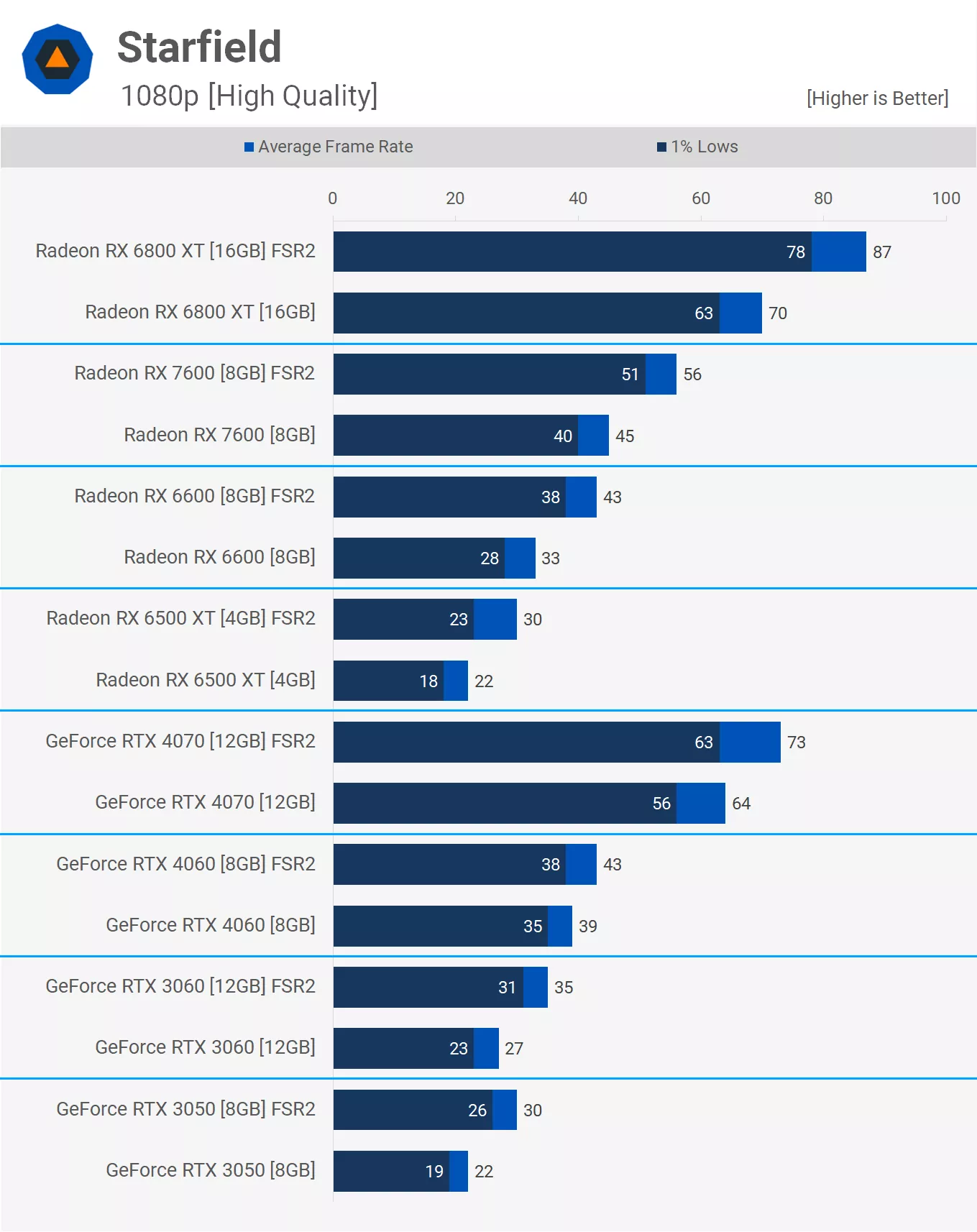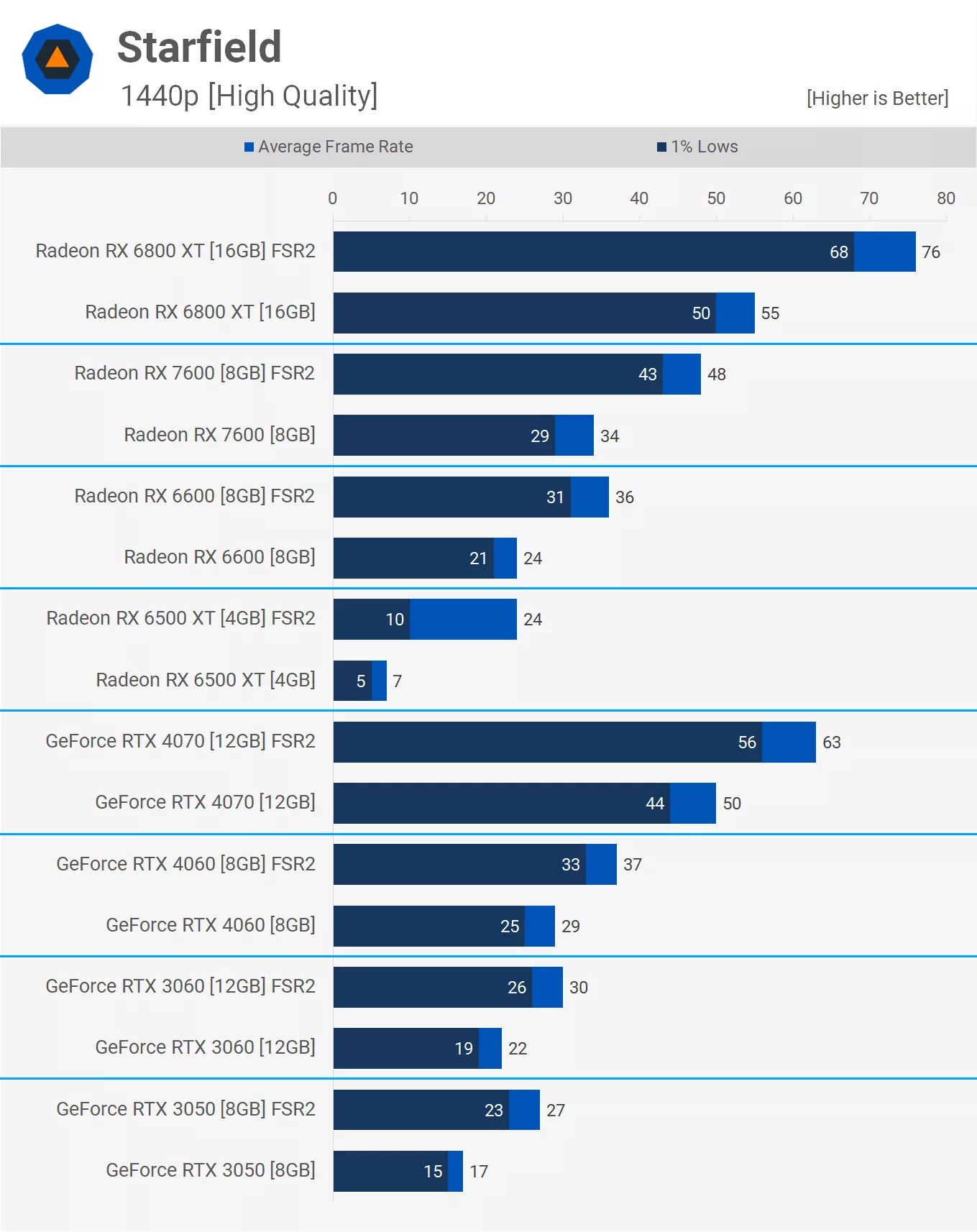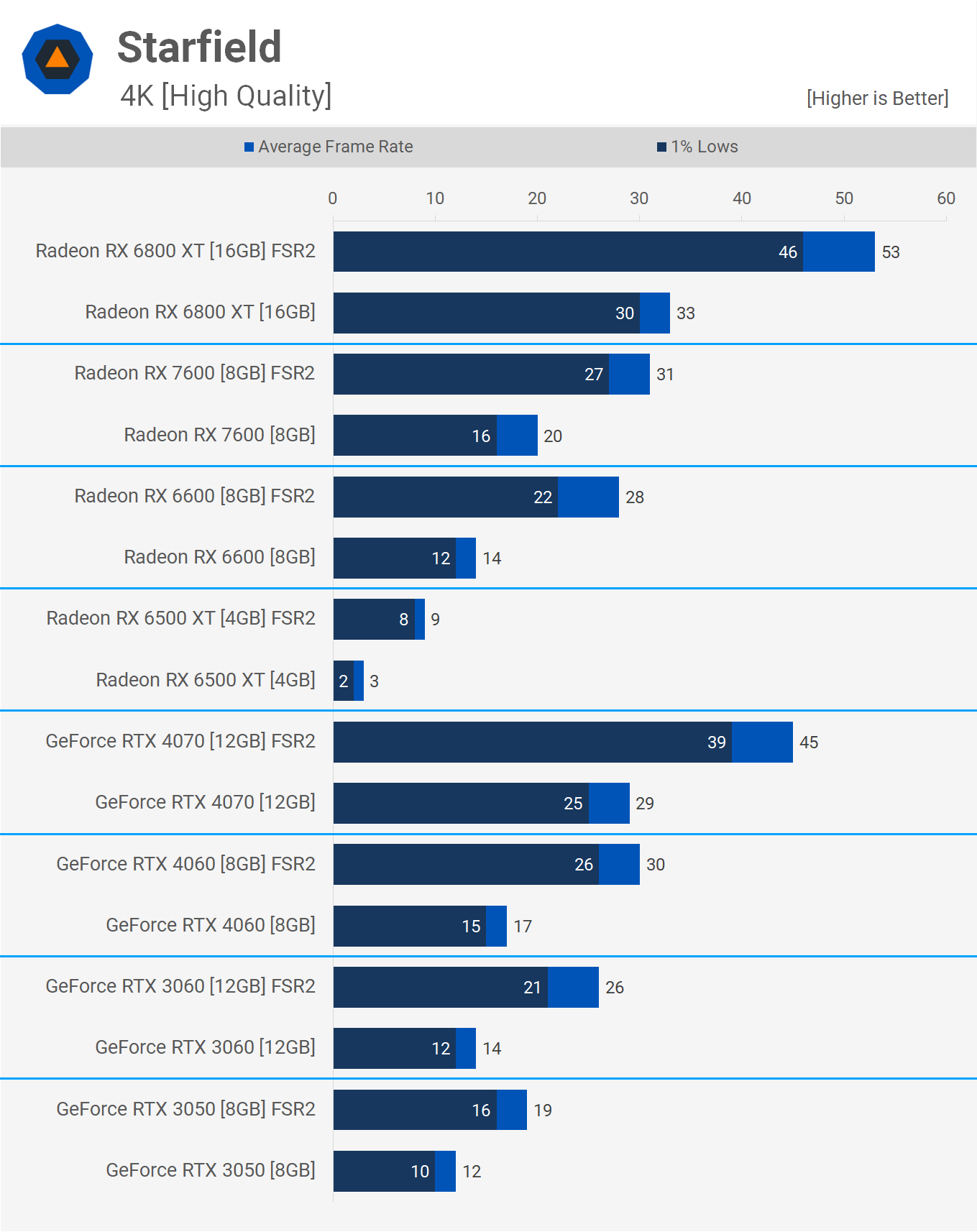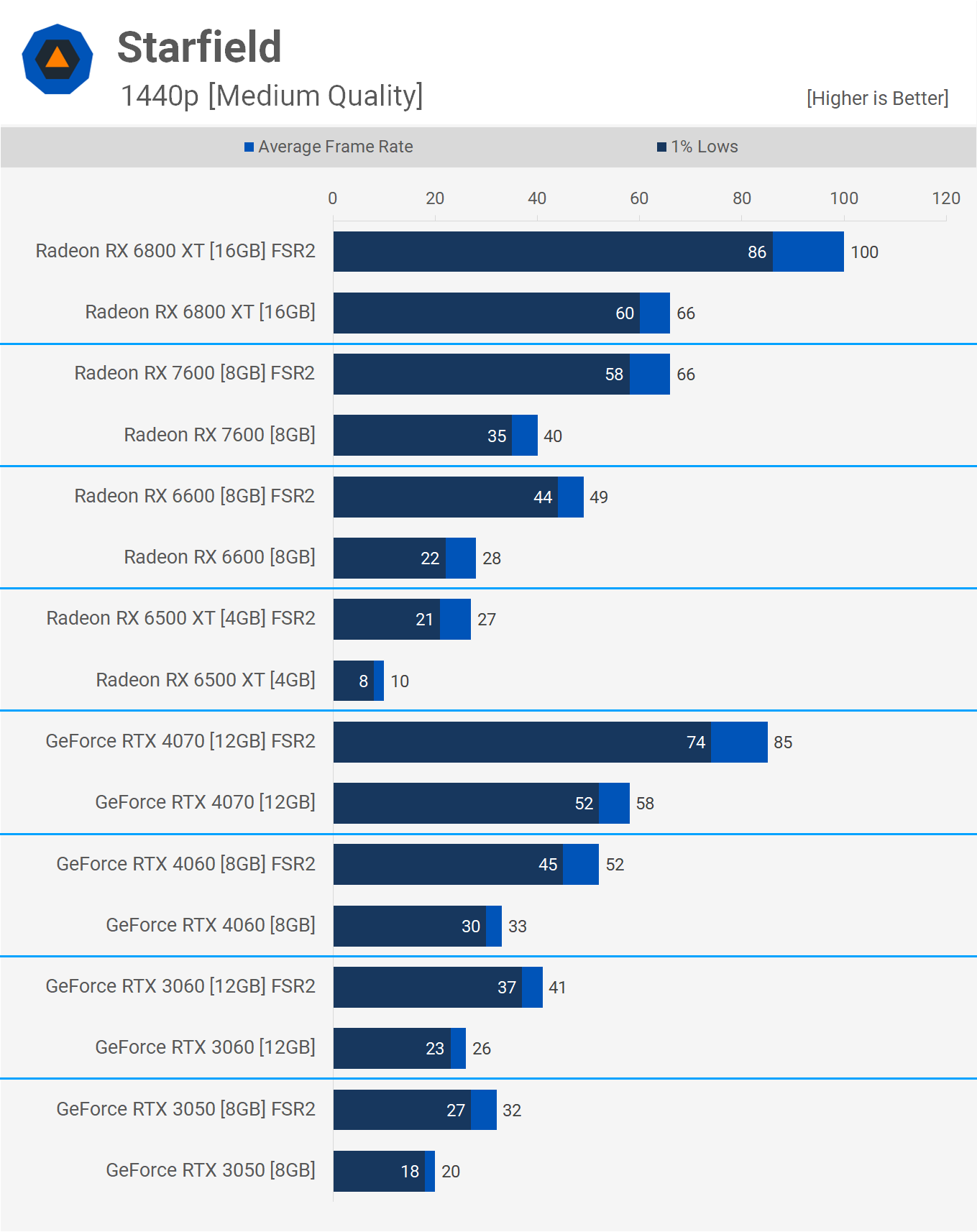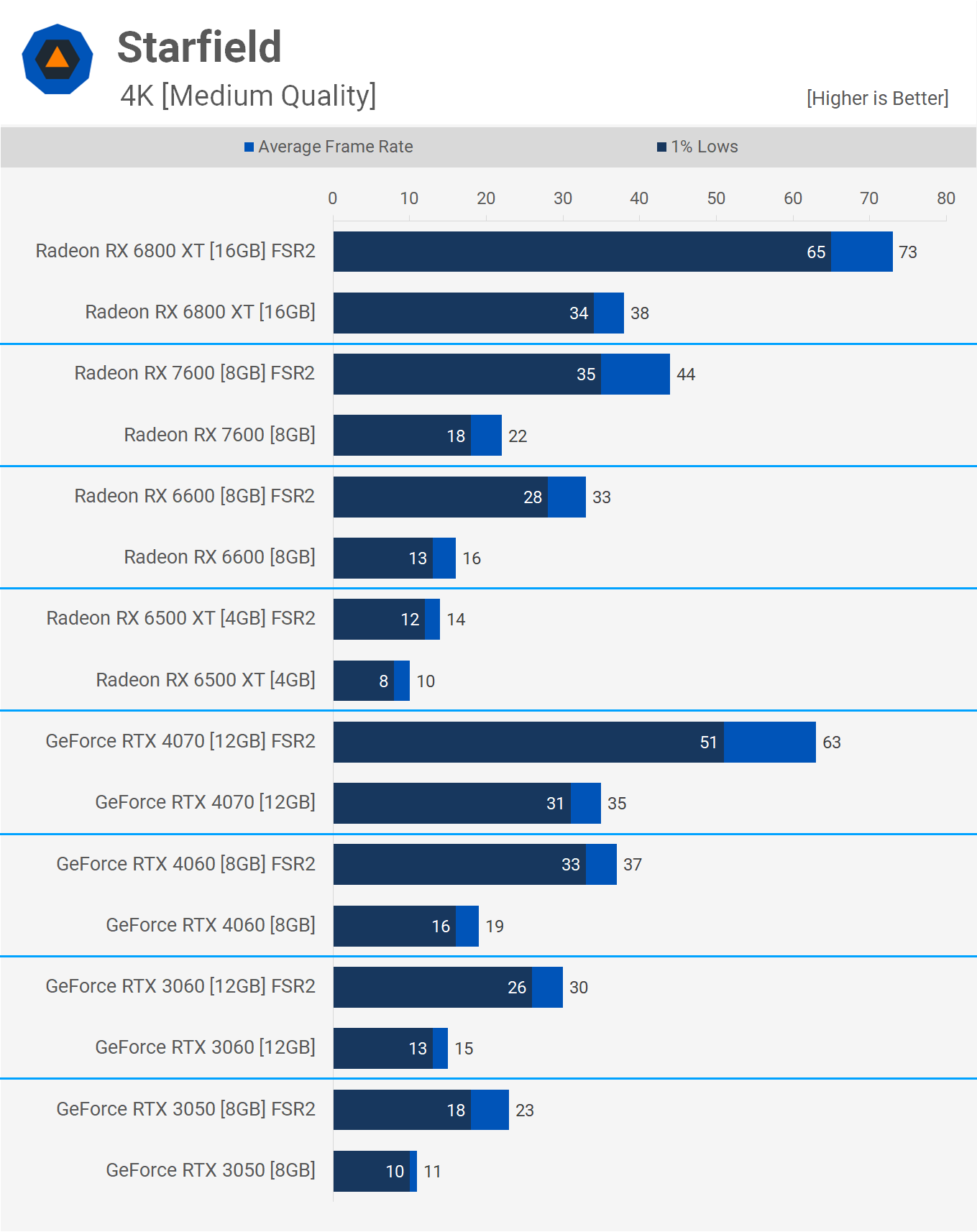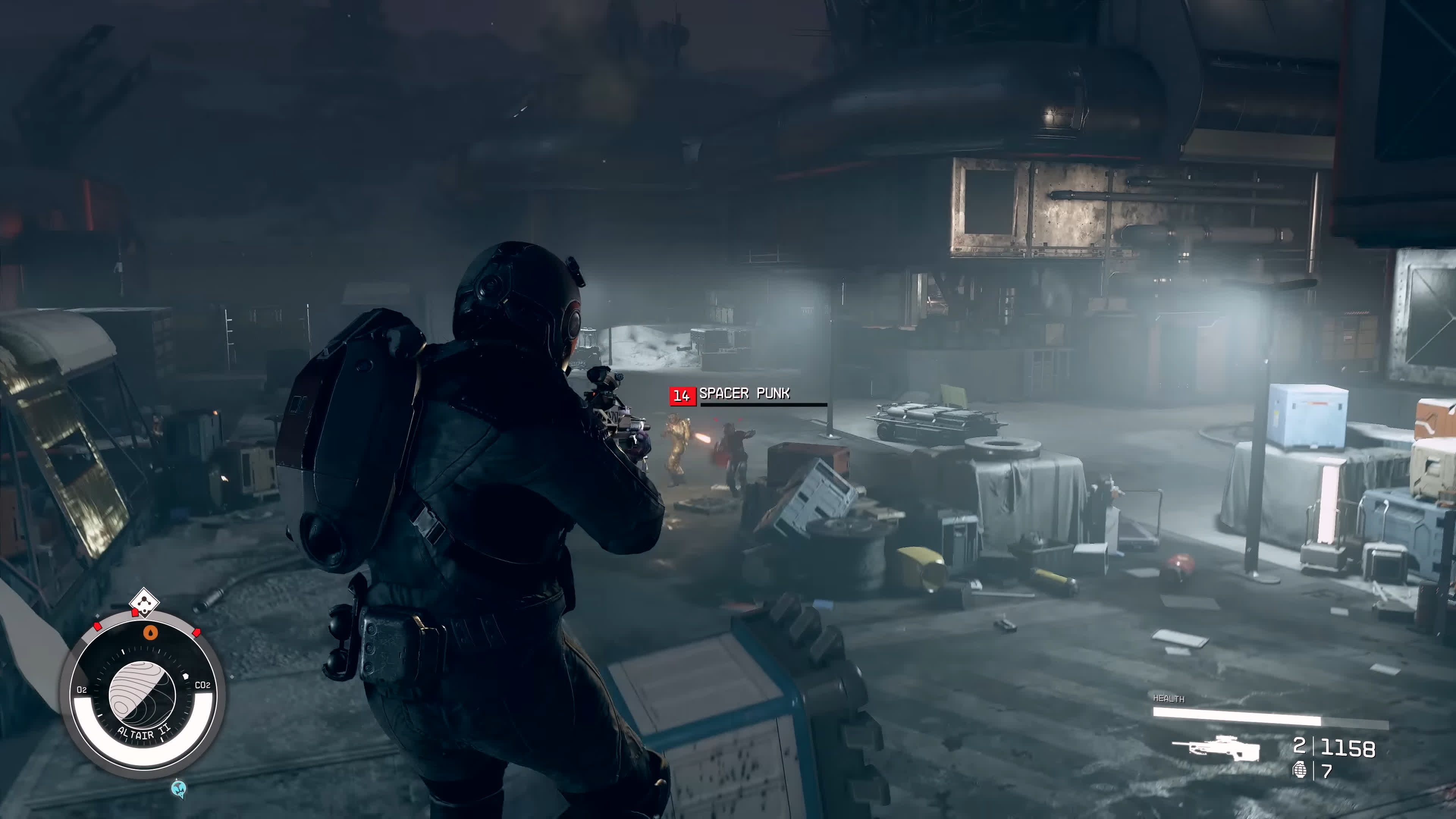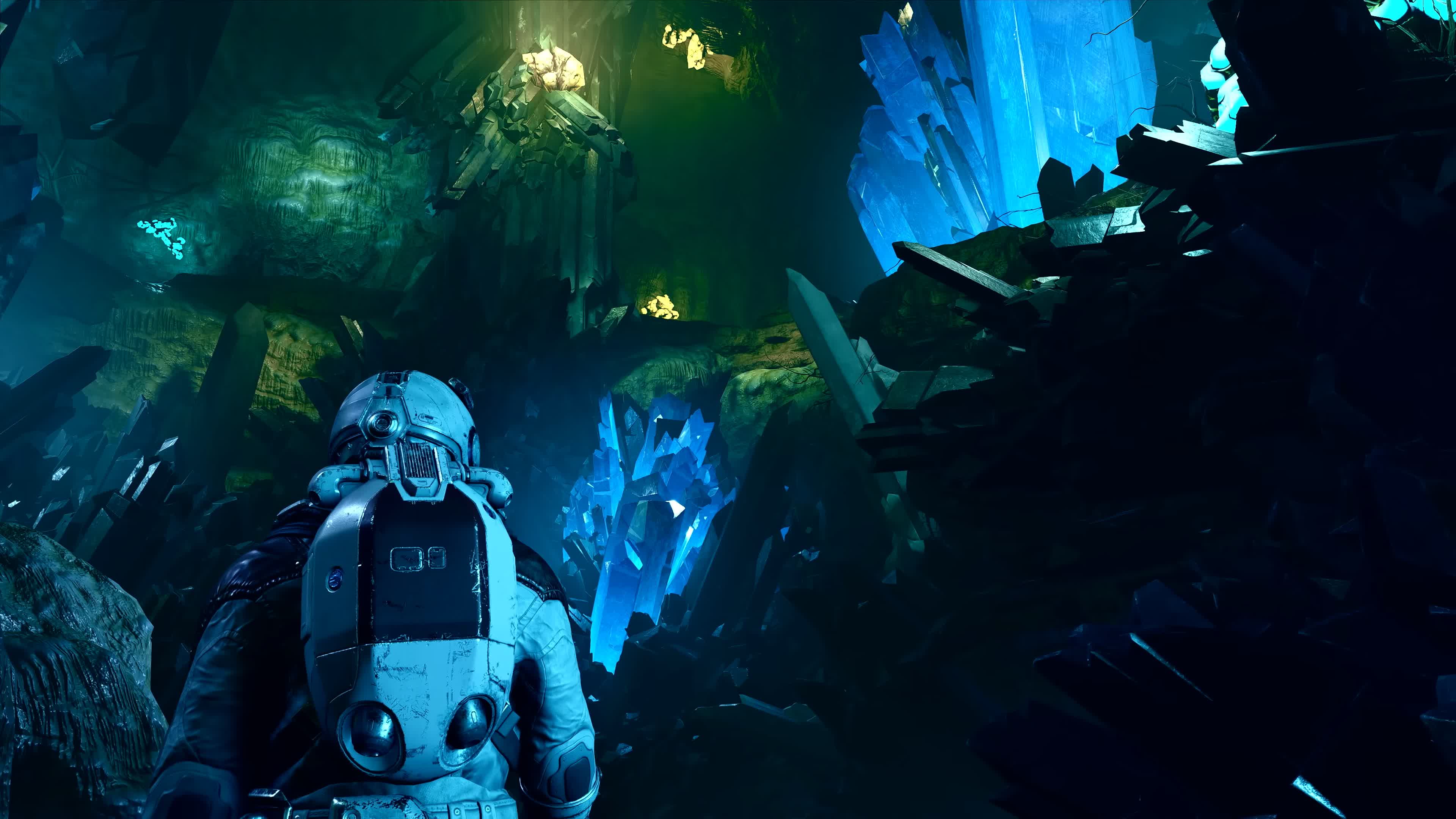Bethesda's latest RPG Starfield brings with it some space opera vibes and plenty of mineral ores to mine with lasers. Striking visuals and an expansive world combined with enjoyable gameplay make it worth the anticipation according to early reviews, but today's test won't be about gameplay, instead we're taking a look at Starfield's GPU performance, by testing 32 GPUs using three quality presets and three resolutions, so there's a lot to go over.
We've also published a separate feature testing all the various quality settings and how to optimize Starfield for best performance or visuals. For now, it'll be less about graphics analysis and more about FPS numbers and hardware specs, and for that we're using the built-in presets and establish head to head comparisons.
Now, the first step was determining how to effectively test such an expansive title – where would be the best location to benchmark Starfield?
We discovered that the forests of Jemison were the most demanding section of the game we'd encountered. Initially, we began testing in 'New Atlantis', a stellar area for CPU testing. However, for GPU assessments, the forests proved more challenging. This might explain why our figures are somewhat lower than those of other testers.
The forests are exceptionally demanding, and we aim to showcase performance in that setting as a baseline minimum to expect in the most intense scenarios. Other areas of the game do perform slightly better. Therefore, beyond just raw FPS numbers, the margins between products serve as an insightful guide for those looking to compare their current setup to potential upgrade options listed in our charts.
For our tests, we've focused on the Medium, High, and Ultra presets. It's worth noting that while all these presets enable FSR 2, we've manually disabled upscaling for most of our tests to present you with native performance metrics. That said, we also have some FSR 2 results to share.
The CPU used for testing is the Ryzen 7 7800X3D with 32GB of DDR5-6000 memory, and we're employing the latest AMD and Nvidia display drivers. This includes Adrenalin 23.8.2 and Game Ready 537.13. As per our usual setup, we're running on Windows 11, and Resizable BAR is activated by default. Now, let's delve into the data…
Benchmarks
Ultra Performance
Starting with the 1080p ultra data, it's important to note that we're utilizing the ultra preset but with FSR manually disabled, which means we're testing at the native 1080p resolution. At this setting, the 7900 XTX outperforms the RTX 4090, rendering 102 fps in comparison to 93 fps. Considering the resolution is only 1080p, neither GPU is especially noteworthy. However, achieving only 93 fps from the 4090 is quite surprising, although it remains very playable.
Interestingly, the 7900 XT matched the performance of the 4090, making it 22% faster than the RTX 4080, which only managed 72 fps, the same as the 6950 XT.
Hitting the 60 fps mark is the 6800 XT, while the 3090 Ti reached 54 fps and the 4070 Ti, 53 fps. The 6750 XT and RTX 3080 are the benchmarks for achieving over 40 fps. However, if you're comfortable with a console-like experience of 30 fps, there's a variety of suitable products, ranging from the new $500 4060 Ti 16GB to the 6600 XT. For performance beyond this, you'd likely need to compromise on visual quality.
Shifting the resolution to 1440p poses challenges for the majority of the tested GPUs. The 7900 XTX's performance drops to 82 fps and the 4090 dips to 78 fps. Remarkably, it's challenging to maintain 60 fps with an RTX 4080 in the forest section of the game used for testing, although the 6950 XT matches the 4080's performance in this scenario.
To achieve frame rates in the mid-40s, you'd need an RTX 3090 Ti or 4070 Ti. For approximately 40 fps, the 3080 Ti or RX 6800 would suffice. These results highlight the intense demands at 1440p.
Additionally, GPUs like the RTX 4060 Ti 16GB only manage to render an average of 27 fps, identical to the performance we observed from the older 5700 XT. However, this is considerably better than the 5 fps from the 6500 XT.
When evaluating the ultra 4K data, it becomes evident that activating FSR is advisable, even for top-tier GPUs like the RTX 4090 or 7900 XTX, as both produce less than 60 fps. The 7900 XT and RTX 4080 are viable at this setting but would also benefit from upscaling, which isn't the most desirable outcome.
High Performance
By lowering the quality preset to high and continuing to manually disable FSR, we observe that the performance for the 7900 XTX improved by around 16% at 1080p. The RTX 4080 saw a significant 25% performance improvement, though it still lagged behind the 7900 XT.
For an average of around 60 fps, the RX 6800, RTX 3080 Ti, and RTX 4070 all suffice. Intriguingly, there's a 40% performance boost for the GeForce GPUs, but only a 19% increase for the RX 6800. The issue for GeForce GPUs is the Ultra quality shadows in foliage-heavy areas, precisely our testing location. High-quality shadows are far less taxing for these GPUs.
Yet, even at 1080p high, it's surprising to see GPUs like the 6750 XT and 4060 Ti 16GB not coming close to 60 fps. GPUs like the 5700 XT, 6650 XT, 2080 Ti, and 3060 were capped at around 40 fps.
Transitioning to 1440p intensifies challenges for these GPUs. Now, even the 7900 XTX finds it tough to provide a high refresh rate experience, achieving an average of 96 fps, with the RTX 4090 trailing at 91 fps. Clearly, Nvidia has some driver optimization tasks ahead.
Predictably, the RTX 4080 and 7900 XT offered playable performance. However, observing just 58 fps from the RTX 4070 Ti and 3090 Ti is concerning. From AMD, only the Radeon RX 6900 XT exceeded 60 fps.
To achieve over 40 fps, you'll need an RTX 3080 or RX 6800. Given these demanding benchmarks, many of the 32 GPUs tested provided a rather subpar PC gaming experience, with 11 of them delivering between 30-40 fps.
At 4K using the high preset, the best result we obtained was 61 fps with the RTX 4090, closely tailed by the 7900 XTX at 59 fps. The 7900 XT dipped to 50 fps, and the RTX 4080 achieved 47 fps. To reach around 40 fps under these conditions, the RTX 3090 Ti or 6950 XT are needed, while slower GPUs will necessitate upscaling.
Medium Performance
Switching our attention to the medium preset (with FSR still disabled), at 1080p, the 7900 XTX was unequivocally the fastest GPU. It surpassed the RTX 4090 by 15%, as the GeForce GPU matched the 120 fps of the XT version. The RTX 4080 barely surpassed 100 fps, equating it with the 6950 XT, while the 4070 Ti found it challenging to outdo the 6800 XT.
Typically, the 6800 XT and RTX 3080 would have comparable performance. However, in this instance, the Radeon GPU was almost 30% faster. The 3080 barely surpassed the 6750 XT. It's astonishing to see the RTX 4060 Ti deliver sub-60 fps rates using medium quality settings at 1080p. The RX 7600 wasn't much better with 53 fps, but at $270, it's much more affordable than the 16GB 4060 Ti.
For those using older hardware from, for instance, the Pascal era, playing Starfield will necessitate a significant upgrade. The GTX 1080 Ti could only muster 35 fps.
Increasing the resolution to 1440p reduces the 7900 XTX to 108 fps – a 32% increase from ultra and 13% from high. The RTX 4090 lagged by 6%, achieving 101 fps. The 7900 XT surpassed the RTX 4080 by 16%. Once more, the RTX 4080 only equaled the 6950 XT with 80 fps.
To reach over 60 fps at 1440p on medium settings, GPUs like the RTX 3090, 3090 Ti, or 4070 Ti from Nvidia, or the 6800 XT from AMD, are essential.
GPUs like the 6750 XT outperformed both the RTX 3070 Ti and the new 4060 Ti at around 45 fps. Below this, performance quickly approaches the 30 fps mark, suggesting a need for reduced resolution or quality settings.
In the 4K medium results, Starfield continues its demanding trend. Typically, at 4K, the RTX 4090 secured the top position, delivering 70 fps, outperforming the 7900 XTX by 8%. The 7900 XT, positioned between the XTX and RTX 4080, achieved 55 fps, marking it 15% faster than its closest GeForce rival.
Repeatedly, we're astonished to see just 40 fps from powerhouses like the RTX 4070 Ti, 3090 Ti, and 6900 XT, especially on medium settings at 4K. These are low rates for such robust hardware. The 6800 XT averaged a mere 38 fps. However, our initial review data, based on 15 games using high/ultra settings at 4K, averaged 61 fps for this GPU. We'll delve deeper into this discrepancy later.
Further down the performance spectrum, GPUs like the 6750 XT, 3070 Ti, and 4060 Ti couldn't achieve 30 fps. Therefore, even with medium settings, very few GPUs can effectively run Starfield at 4K.
Benchmarks: FSR Performance
Now here's a look at FSR performance, which is worth investigating in detail since the game enables FSR with all four presets. For the ultra preset, we're getting what amounts to quality mode with a 75% render scale.
This boosted the performance of the 6800 XT by 13% at 1080p, a rather modest gain. Oddly, the Radeon RX 7600 only experienced an 8% uplift, while the RX 6600 saw a 15% uplift. Although the 6500 XT had a substantial 56% uplift, it was negligible given its already poor performance.
What's particularly unusual is that the GeForce GPUs don't seem to benefit much from using FSR, which is odd because usually scaling is somewhat consistent.
Moving to 1440p did yield some benefit for the GeForce GPUs with FSR. For instance, the RTX 4060 became 24% faster, although we noted only an 8% improvement for the RTX 4070. Meanwhile, the 6800 XT increased from 47 fps to 57 fps, a 21% boost. The RX 7600 didn't scale as impressively, witnessing just a 13% boost, whereas the RX 6600 enjoyed a substantial 40% increase.
At 4K, the 6800 XT was 34% faster using FSR, and the RX 7600 was 56% faster, a surprising result considering the modest improvements at 1080p and 1440p for this GPU. The RX 6600 saw a 75% uplift. For the GeForce GPUs, the RTX 4070 experienced a 25% boost, with 43% for the RTX 4060, 45% for the RTX 3060, and 63% for the RTX 3050.
Using the high-quality preset reduces the render scale to 62%. Consequently, we'd expect more significant FSR gains, and indeed, they are notable. At 1080p, we observed a 24% boost for both the 6800 XT and RX 7600, 30% for the RX 6600, and 36% for the 6500 XT.
This scaling aligns more with our observations from the ultra preset. However, the improvements for the GeForce GPUs weren't as striking. The RTX 4070 was 14% faster, with a mere 10% uplift for the RTX 4060, yet a 30% improvement for the RTX 3060 and 36% for the RTX 3050.
FSR gains surged at 1440p: the 6800 XT was 38% faster with upscaling, 41% for the RX 7600, and 50% for the RX 6600. For the GeForce GPUs, there was a 26% gain for the RTX 4070, 28% for the RTX 4060, 36% for the 3060, and a significant 59% boost for the 3050.
At 4K, the 6800 XT surged from 33 fps to 53 fps using FSR, marking a 61% boost. In a similar vein, the RTX 4070 also enjoyed a notable 55% performance enhancement.
Lastly, the medium preset sets the render scale to a mere 50%. At 1080p, the visuals were severely degraded, making the game almost unplayable. Thus, the 35% performance improvement for the 6800 XT doesn't justify the significant loss in visual quality due to FSR. The RTX 4070 shares a similar narrative.
At 1440p, the visual degradation with FSR isn't as pronounced, although the 50% render scale remains quite aggressive. However, some might find the 65% performance boost observed with the RX 7600 worthwhile, especially as it exceeds 60 fps.
At 4K, the 50% render scale becomes less problematic, and the 92% performance boost for the 6800 XT is appreciable, as is the 80% increase for the RTX 4070.
A Ridiculously Demanding Game
Starfield is an exciting release for gamers. Despite the insane levels of hype, it appears to be living up to gamers expectations for the most part, and that's not something you can often say about game releases these days... but after Baldur's Gate 3, perhaps we're on a positive streak.
A potential concern with Starfield on PC is performance. The hardware requirements can be extreme, depending on the location in the game. In terms of GPU performance, we believe we've assessed one of the most demanding sections of the game, if not the most demanding. It remains unclear why this is though, and could be an indication that additional optimization work lies ahead.
The other issue with Starfield being both a really fun game to play, and super demanding on hardware, is that it highlights just how diabolical this latest generation of GPU hardware is. With virtually no improvement in cost per frame in the last 3 years, we've ended up with $500-600 products that struggle to reach 60 fps at 1440p on high settings. For instance, the RTX 4070 peaks at 50 fps. It's also disconcerting that few new GPUs exhibit a significant performance improvement over previous generation's flagships.
There's no denying that Starfield is a ridiculously demanding game that does require further optimization work, but had mid-range current-gen GPUs offered an actual performance uplift, it would be easy to achieve well over 60 fps at 1440p using high quality settings.
As for how demanding the game is, let's use the Radeon RX 6800 XT as a benchmark. It achieves 38 fps at 4K on Medium, 33 fps on High, and a mere 29 fps on Ultra. For comparison, the 6800 XT averages 41 fps in The Last of Us Part I with the Ultra preset and 41 fps in Cyberpunk 2077 on the high preset – a performance boost of over 40% in these instances. In Hogwarts Legacy on Ultra, we observe 51 fps (a 76% increase) and 58 fps in A Plague Tale: Requiem on Ultra settings – a remarkable 100% surge.
While these aren't direct comparisons, when 6800 XT users are accustomed to seeing 40-50 fps at 4K in the latest titles, a sub-30 fps in Starfield is jarring, highlighting the game's demands.
It's pretty crazy to find a game that's so upscaling focused
Of course, you can use FSR 2 upscaling for a significant performance boost, but this often comes at the expense of visual quality and frankly shouldn't be used at 1080p, especially on lower quality presets where the render scale diminishes to 50%. It's also pretty crazy to find a game that's so upscaling focused – enabled by default on every preset – yet only incorporates FSR 2 and not DLSS. We hope DLSS will be integrated soon.
Performance GPU Targets
If you're considering a GPU upgrade for Starfield, targeting around 1440p medium to high settings would be ideal. For about 60 fps, a 6800 XT or RTX 4070 Ti would be apt. Currently, the Radeon GPU is available for around $530, while the 4070 Ti is priced at $800. In this scenario, the GeForce GPU lags in performance.
Normally, we'd lean towards a $600 RTX 4070 over a discounted 6800 XT. However, if Starfield is your focal point, the older Radeon GPU is both more affordable and efficient.
A more attractive option might be the Radeon RX 7800 XT, slated for launch next week. Rumors suggest it will offer 6800 XT-level performance for $500. Yet, puzzlingly, AMD chose not to make the 7800 XT and 7700 XT available for early Starfield benchmarks – a missed opportunity.
By next week, most Starfield benchmark content will have been released. We don't plan to update this article to add the new Radeon GPUs unless there's a noteworthy driver or game update accompanying them.
On that note, we're keen to track the progress of Starfield over the coming months to see if performance improves and if Nvidia's able to catch up to AMD.

